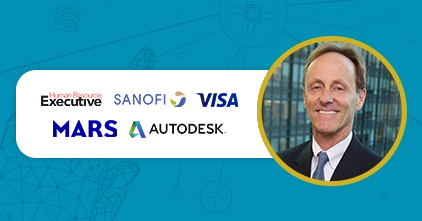Learn how corporate language training improves the employee experience. Empower and equip your team with the right tools, skills, and mindset in the workplace.

Over the years, more and more companies have invested in language learning. Previously, we have covered how it helps organizations grow regardless of industry. Now, we will shift the perspective to how language training improves the employee experience, especially in the post-pandemic workplace.
It is important to remember that thriving during and after the COVID-19 pandemic meant changing from face-to-face to digital learning. It also required an upskilling and reskilling strategy in the workforce. Alongside leaders who had to make difficult decisions, the employees had to keep up as well.
Amid the changes, how did organizations take care of the well-being of their employees? How can they ensure that there is a positive employee experience?
The “Great Resignation” and the Employee Experience
Research from global analytics and advice firm Gallup states that 48% or nearly half of the working population in the United States are looking for new job opportunities. The massive resignation and active job search from across industries led to the new term, the “Great Resignation.” The primary reason for this? Disengagement.
To combat disengagement, receiving commensurate compensation for a day’s hard work is not enough. It is essential to have a sense of purpose and belongingness in the organization. The proper response leads us to employee experience.
Derived from the customer experience or the customer-centric mindset, the employee experience puts the spotlight on the most valuable asset of any organization, the employees. It aims to address their wants and needs and to go beyond providing a satisfactory working environment. The goal is to make work positive and motivating.
While the employee experience has many elements to it, one topic worth highlighting is training. It is about equipping employees with the right tools, skills, and mindset needed to adapt and excel in the changing workplace environment.
Improving the Employee Experience through Corporate Language Training
In the post-pandemic workplace, technology skills, cognitive skills, and cultural skills have found an intersection. The ability to effectively connect, communicate, and collaborate are essential skills that should be evident whether face-to-face or online. With language learning, these soft skills are addressed.
To amplify the employee experience, however, corporate language training is the way to go. By providing an avenue for your employees to work on their language skills together with other members of the organization, they gain more competencies and broaden their perspectives in terms of growth and development.
Below are three ways corporate language training improves the employee experience in the new normal workplace.
It encourages growth by bringing learning to employees wherever they are.
According to an L&D survey by the Human resource management organization Chartered Institute of Personnel and Development (CIPD), one of the trends and solutions you can adapt to create future-ready training is to shift from purely face-to-face lessons to either blended learning or digital learning.
Similar to requiring your employees to accomplish tasks through remote work, training should be accessible, relevant, and flexible for them. The workplace has evolved, so should training!
Thankfully, corporate language training can be done in bite-sized content, anytime, anywhere, and on any device. It enables virtual learning at the most convenient time of the learner, ensuring that they have access to mobile language learning.
Inspire your employees to continue honing their skills and finding growth by investing in virtual language training.

It improves communication skills, boosts confidence, and increases productivity.
Incorporating corporate language training in the L&D program helps employees gain confidence to express themselves freely, connect with people, and become more productive in the workplace.
With language training, oral and written communication skills are improved. As a result, knowing they are effective communicators, employees are ready to handle business meetings, brainstorming sessions, and reports, among others. They spend less time ironing out miscommunication concerns, and more time focusing on the job at hand.
From co-workers to clients, language confident employees are empowered to take on responsibilities and connect with other people from all over the world.
It enables social learning, fosters collaboration, and provides a sense of belonging.
To effectively learn a new language, practice and application are necessary. This makes intra-company group language classes more ideal since employees can learn from each other. Shared experience makes learning easier and faster. Furthermore, social learning keeps employees engaged and motivated.
In addition, when companies invest in corporate language training that exposes employees to content that is relevant to their job description and industry, they encourage employees to connect to their co-workers, inspire collaboration, and provide a better understanding of their place and role in the organization.

Finding the Right Corporate Language Training Provider
To provide corporate language training to your employees, it is vital to consider the learning platform, the language courses, and the learning modality. Always put your employees at the center of your L&D planning by thinking about how you can make it accessible, relevant, and motivating for them.
goFLUENT accelerates language learning by providing different language training activities that can be done at the pace and availability of learners while personalizing the content they receive.
Through AI-powered learning, each employee experiences personalized learning according to job skills and industry, while having a collaborative space with other members of the team in a virtual classroom. Expert instructors are present to lead language classes and provide feedback to each learner as well.
By partnering with a corporate language training provider like goFLUENT, organizations can deploy global training strategies that enable employees to succeed in the evolving workplace.
Conclusion
When it comes to improving employee experience, the end goal of language learning is to equip employees with business language skills for work and keep them happy and motivated.
Delivering corporate language training goes beyond having the right tools in the workplace. It empowers employees by creating a supportive learning environment and a collaborative social space within the organization.



